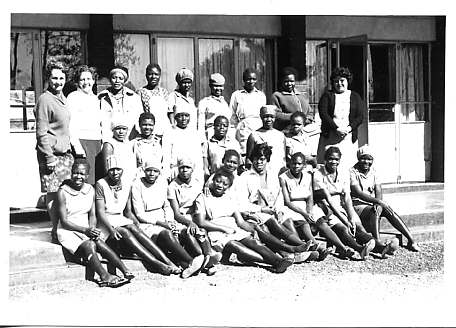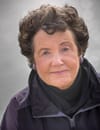Self Help

Far L Mrs. Dewe, Mom, Far R Mrs. Katsouris at Amaveni Township 1969 with the Self Help Girls including Gertrude Mundenda, Vongai Mbadzo, Noreen Phirie, Jane Sunga, Isabel Chileshe, Margaret Phiri, and Rosemary Makleka.
Self Help
Too young to enter nursing school in Johannesburg, my mother was forced into a year at domestic science school set up under the lines of Robert Gordon’s Colleges: Aberdeen School of Domestic Science, 352 King Street. She hated every minute of that year. Knitting, sewing, crochet and embroidery, let alone the finer points of laundering and cooking were not her joys or strengths. Her talent was leadership.
Self Help
African girls were forced to leave school due to changes in education principle and policy by Ian Smith’s Rhodesian Front in 1969. They were not old enough to work. Mom managed to bring a diverse bunch of talented women together including Mrs. Phoebe Pratt, Mrs. Thetis Katsouris, Mrs Combrink, Mrs Mary Fletcher, Mrs. Malen and Mrs. Dewe to teach these girls marketable skills and find a market for their products locally and overseas under the name of Que Que Crafts.
Weekly, these women would sign in at Mr. Bellamy’s Compound Manger Office and proceed to the Welfare Hall in Amaveni Township for lessons in basic sewing, knitting, embroidery, crochet and basketry along with netball to learn team work.
Everyone learned a lot. Mrs. Katsouris brought her skills in Greek traditional embroidery to the table. It involved counted thread stiches, drawn and pulled thread work to be done on tray cloths. It was exacting. It needed sharp fine scissors used in just the right places and lots of counting. It proved difficult to keep the white on white work clean.
Mrs. Mary Fletcher had a better idea. She was a wiz at sewing. She ran up a bunch of aprons made of Rhodesian cotton from the ginnery outside Gatooma forty miles away. Mrs. Combrink was an accomplished artist. She stenciled African scenes, or stands of aloes or flame lilies onto the pockets or around the border of the aprons for the girls to embroider once they had mastered the basics of stem and seed stitch, satin stitch, chain stitch and French knots, to name a few. However, embroidery cottons (thread) proved hard to get and very expensive with international sanctions in effect.
Mrs Katsouris, meanwhile, had turned her attention to crochet. Many lovely doilies and milk jug covers were made with beaded borders. Soon every household in Que Que acquired an assortment. Full-length tablecloths followed using Rhodesian unmercerised cotton.
Used hand sewing machines were donated from various sources. The concept of cutting out a pattern proved difficult to understand, but Mrs. Fletcher in particular persevered.
Netball, coached and refereed by Eunice Ndhlovu with A and B teams or First and Second teams caused much jealousy. Having the girls make their own team uniforms in pink or blue solved the problem.
Basket making proved successful and of professional quality. The most difficult concept to understand was working to a deadline for delivery of finished goods to fill an order. Coming up short made mom’s “heart sore”. In Africa time is not measured by minutes and hours or even days and months, but by the seasons, if at all.
So, beginning knitting started small with scraps of wool from everyone’s knitting basket in Que Que. Squares were knitted one by one by each girl and sewn together as a group. It went well, blankets growing square by square.
Everyone shared in the feeling of accomplishment. Six blankets were completed under the direction of Mrs. Katsouris and Mrs. Malen. As winter approached, it was decided to give them to the Jairos Jiri Center for the handicapped in Gwelo, forty miles away.
